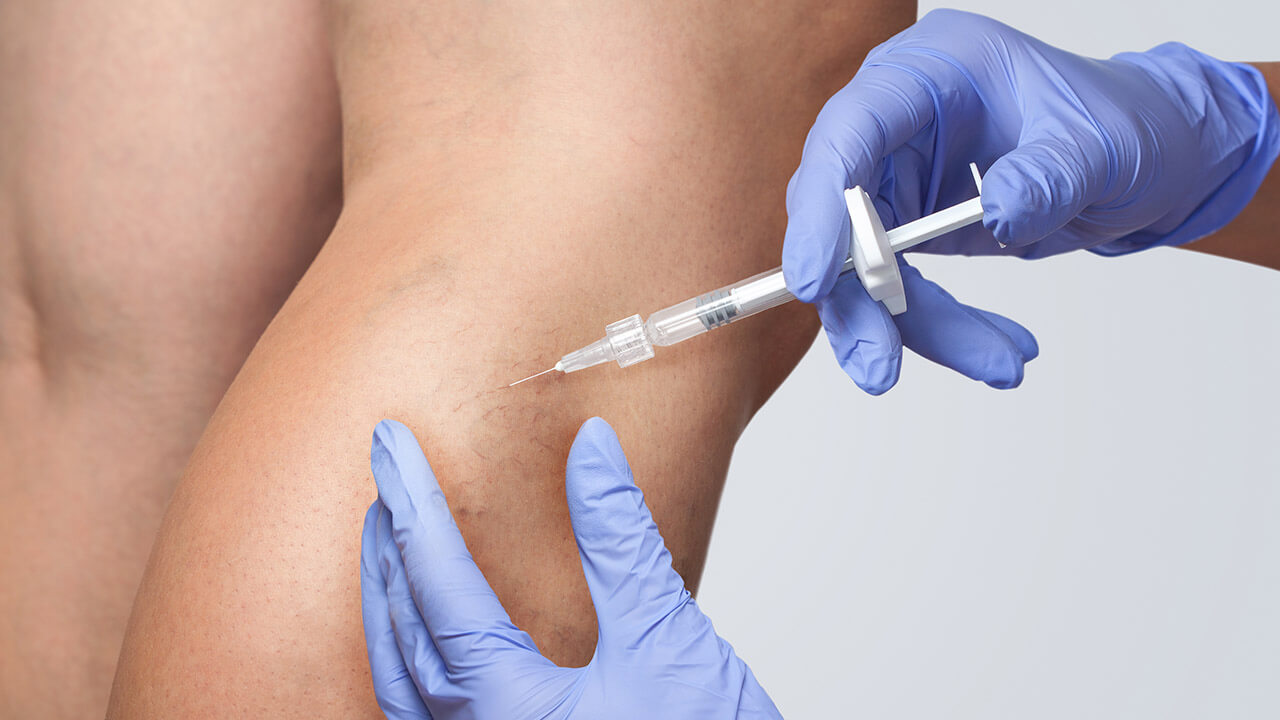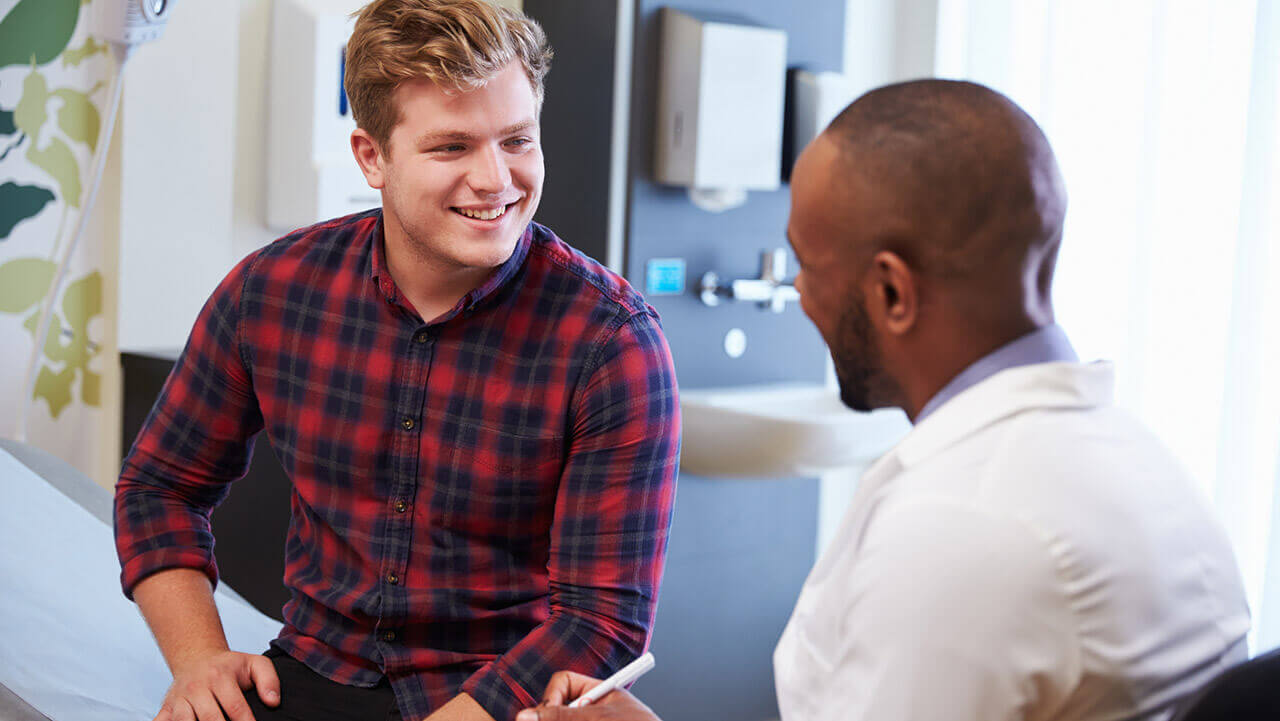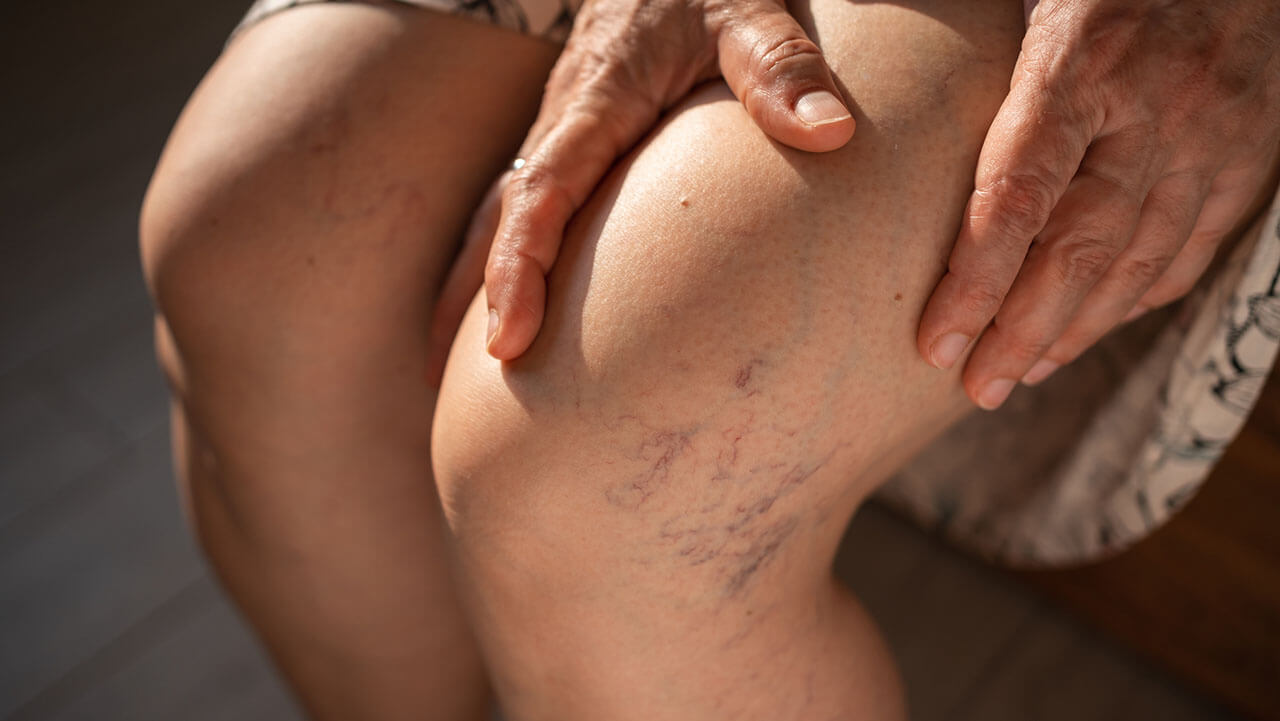

What is sclerotherapy?
Sclerotherapy is a minimally invasive medical procedure to treat spider veins and small varicose veins in the legs. A solution is injected into the vein with a fine, thin needle, causing them to shrink and gradually disappear. There is typically a 50 to 80 percent success rate for this procedure. Who is a candidate for sclerotherapy?
Each patient will have an initial consultation with a medical specialist who will determine whether or not you are a candidate for the procedure.Tell your medical specialist if there is a possibility that you may be pregnant or are breast feeding and if you have had any recent illnesses. Your medical specialist will review your medical history to determine if you have any medical conditions or allergies that may prohibit you from having the procedure. You will also need to provide a listing of medications you are taking, including herbal supplements and aspirin.
Where and how is the procedure done?
This procedure is typically done in an outpatient setting.A very fine needle will be used to inject a salt solution into the vein. Throughout the procedure you may feel small needle sticks and may experience a mild burning sensation. You may experience a cramping sensation for one or two minutes when varicose veins are injected.
The number of veins treated in one session varies and depends on the size and location of the veins, and the general medical condition of the patient.
The procedure is typically completed within 15 to 30 minutes.
How does the procedure work?
When the solution is injected into the vein, it irritates the lining of the vein, which causes it to collapse and stick together. Over time, the vessel turns into scar tissue and fades from view.How should I prepare for the procedure?
Your health care provider will give you instructions for preparing for the procedure. Please keep in mind the following:- You may be asked to stop taking supplements.
- If you are taking an antibiotic, tell your provider and ask for guidelines for discontinuing the medication.
- Inform your doctor about all recent illness and any medical conditions.
- No lotion should be applied to legs before the procedure.
- You should wear comfortable, loose-fitting clothing to your appointment.
What will I experience after the procedure?
After the procedure you will be instructed to wear support hose (known as compression hosiery) or wraps to compress the treated vessels. A heavy compression stocking is needed. Your provider will recommend where to purchase heavy compression stockings.You will be able to drive yourself home and resume your activities of daily living. Walking is encouraged.
Avoid the following for 48 hours after treatment:
- Aspirin, ibuprofen or other anti-inflammatory drugs
- Acetaminophen may be used if needed
- Hot baths
- Hot compresses
- Whirlpools or saunas
- Direct exposure to sunlight
You may also experience the following side effects following your procedure:
Injected varicose veins may become lumpy and/or hard for several months.
Raised red areas may appear at the injection sites and typically disappear within 48-72 hours.
Brown lines or spots on the skin may be seen at the injection sites. These typically disappear within three to six months.
Bruising may occur around the injection site, which can last several weeks.
How effective is sclerotherapy?
Studies indicate that 50 to 80 percent of injected veins may be eliminated with a session of sclerotherapy. Some people do not respond to the injections at all. Although this procedure works for most patients, there is no guarantee for success.Spider veins typically respond in three to six weeks and varicose veins typically respond in three to four months. If the veins respond to the treatment, they will not reappear. However, new veins may appear and you may need to return for injections to treat the new veins.



